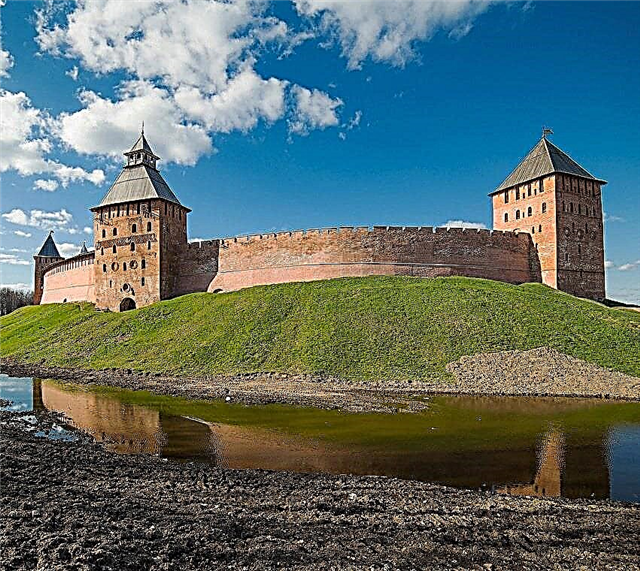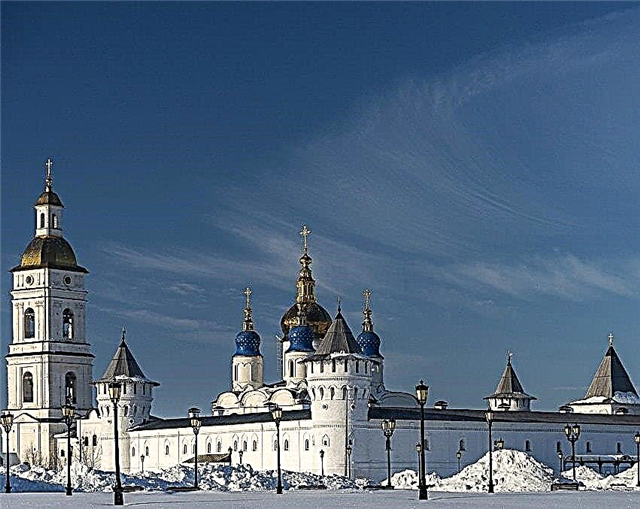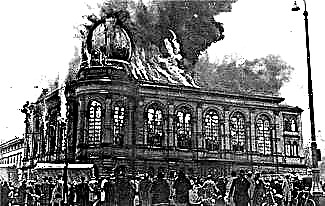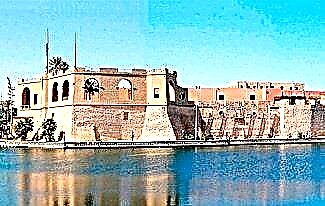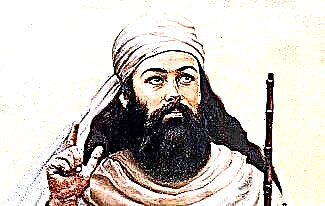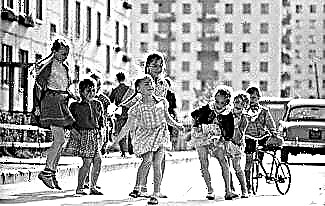The Soviet Union, of course, was a very controversial and diverse country. Moreover, this state has developed so dynamically that even the most unbiased historians, and even more so the authors of memoirs, manage to more or less objectively record this or that current moment in their works. Moreover, when studying different sources, it seems that they describe not just different eras, but different worlds. The heroes, for example, of Yuri Trifonov's story "House on the Embankment" and the characters of Mikhail Sholokhov's novel "Virgin Land Upturned" live (with a certain assumption) at about the same time. but there is absolutely no connection between them. Except, perhaps, the danger of perishing at any moment.
The memories of people who settled in the USSR are just as ambiguous. Someone recalls going to the savings bank to pay for utilities - my mother gave three rubles and allowed them to spend the change at their own discretion. Someone was forced to stand in line to buy a can of milk and a can of sour cream. Someone's books were not published for years because of a weak ideological component, and someone drank a bitter one because he was again bypassed with the Lenin Prize.
The USSR, as a state, already belongs to history. Everyone can believe that this happiness will come back or that this horror will never happen again. But one way or another, the Soviet Union, with all its advantages and disadvantages, will remain a part of our past.
- From 1947 to 1954, prices were reduced annually (in the spring) in the Soviet Union. Relevant official government announcements were published in the press with detailed layouts for which goods and by what percentage the price will be reduced. The total benefit to the population was also calculated. For example, on a price cut in 1953, the population of the Soviet Union “benefited” 50 billion rubles, and the next decrease cost the state 20 billion rubles. The government also took into account the cumulative effect: a drop in prices in state trade almost automatically caused a drop in prices in collective farm markets. Whereas prices in state trade have decreased 2.3 times over seven years, prices on collective farm markets have dropped by 4 times.
- Vladimir Vysotsky's song “A Case at a Mine” veiledly criticizes the practice of endless increase in production rates in almost any production, which has spread since the mid-1950s. The characters of the song refuse to rescue a colleague from the rubble, who “Will begin to fulfill three norms / Will start to give coal to the country - and us a khan!” Until 1955, there was a progressive system of remuneration, according to which overplanned products were paid in a larger volume than planned. It looked different in different industries, but the essence was the same: you produce more plan - you get more stake. For example, a turner was paid for the planned 250 parts a month at 5 rubles. Over-planned details up to 50 were paid for 7.5 rubles, the next 50 - for 9 rubles, etc. Then this practice was simply curtailed, but it was also replaced by a constant increase in production rates while maintaining the size of wages. This led to the fact that at first the workers began calmly and without haste to fulfill the existing norms, exceeding them once a year by several percent. And in the 1980s, the norm, especially at enterprises producing consumer goods, most of the planned products were produced in a crunch mode at the end of the reporting period (month, quarter or year). Consumers quickly grasped the point, and, for example, household appliances released at the end of the year could have been in stores for years - it was almost a guaranteed marriage.
- Just about the beginning of the perestroika that destroyed the USSR, the problem of poverty was solved in the country. It, in the understanding of the authorities, has existed since the post-war times, and no one denied the existence of poverty. Official statistics stated that in 1960, only 4% of citizens had a per capita income of over 100 rubles per month. In 1980, there were already 60% of such citizens (available in the form of average per capita income in families). In fact, before the eyes of one generation, there was a qualitative leap in the income of the population. But this generally positive process also had negative consequences. As incomes grew, so did the demands of the people, which the state could not meet in better time.
- The Soviet ruble was “wooden”. Unlike other, "gold" currencies, it could not be freely exchanged. In principle, there was a shadow foreign exchange market, but its especially successful dealers, at best, received 15 years in prison, or even got to the firing line. The exchange rate in this market was about 3-4 rubles per US dollar. The people knew about this, and many considered the internal Soviet prices to be unfair - American jeans cost 5-10 dollars abroad, in state trade their price was 100 rubles, and for speculators they could cost 250. This caused discontent, which became one of the factors of the collapse USSR - the overwhelming majority of the country's population was convinced that a market economy is low prices and a wide range of goods. Few people thought that in the non-market Soviet economy, 5 kopecks was equal to at least $ 1.5, when comparing travel in the Moscow and New York metro. And if we compare the prices for utilities - they cost a Soviet family a maximum of 4 - 5 rubles - then the ruble exchange rate generally flew to sky-high heights.
- It is generally accepted that around the end of the 1970s, the so-called “stagnation” began in the economy of the Soviet Union. It is impossible to express this stagnation in numbers - the country's economy grew by 3-4% per year, and it was not the current interest in monetary terms, but the real output. But stagnation did exist in the minds of the Soviet leadership. In terms of large numbers, they saw that in meeting basic needs - food consumption, housing, production of basic consumer goods - the Soviet Union was either approaching or even overtaking the leading Western countries. However, the leaders of the Politburo of the Central Committee of the CPSU paid little attention to the psychological change that happened in the minds of the population. The Kremlin elders, who were proud (and quite rightly) of the fact that during their lifetime the people moved from dugouts to comfortable apartments and began to eat normally, realized too late that the people began to consider the satisfaction of basic needs an inalienable given.
- Most of the modern establishment, including the historical one, are descendants of the rehabilitated “prisoners of the Gulag”. Therefore, Nikita Khrushchev, who led the Soviet Union from 1953 to 1964, is most often presented as a narrow-minded, but kind and sympathetic leader "from the people." Like, there was such a bald maize who banged his boot on the table at the UN and cursed cultural figures. But he also rehabilitated millions of innocent and repressed peoples. In fact, Khrushchev's role in the destruction of the USSR is comparable to that of Mikhail Gorbachev. In fact, Gorbachev logically completed what Khrushchev had begun. The list of mistakes and deliberate sabotage of this leader will not fit into a whole book. Khrushchev's speech at the XX Congress of the CPSU and the subsequent de-Stalinization split Soviet society in such a way that this split is felt in today's Russia. Laughter over the planting of corn in the Arkhangelsk region cost the country only in 1963 372 tons of gold - this is exactly the amount of the precious metal that had to be sold in order to buy the missing grain in the USA and Canada. Even the hundredfold glorified development of the virgin lands, which cost the country 44 billion rubles (and if everything was done according to the mind, it would take twice as much), did not give a special increase in the harvest - 10 million tons of virgin wheat within the total harvest across the country fit into the weather hesitation. The propaganda campaign of 1962 looked like a real mockery of the people, in which an increase in prices for meat products by 30% (!) Was called an economically profitable decision supported by the people. And, of course, the illegal transfer of Crimea to Ukraine is a separate line in the list of Khrushchev's actions.
- Since the formation of the first collective farms, remuneration for labor in them was carried out according to the so-called “workdays”. This unit was variable and depended on the importance of the work being done. Collective farmers who performed work requiring high qualifications could earn both 2 and 3 workdays per day. The newspapers wrote that the foremost workers worked out even 100 workdays a day. But, accordingly, in a short working day or an unfulfilled task, one could get less than one workday. In total, there were from 5 to 7 price groups. For workdays, the collective farm was paid in kind or in money. You can often come across memories that workdays were paid poorly, or were not paid at all. Some of these memories, especially those of the inhabitants of the Russian Non-Black Earth Region or the North, are true. During the war years, collective farmers were given an average of 0.8 to 1.6 kg of grain per workday, that is, a person could earn 25 kg of grain per month. However, even in the non-war harvest years, the collective farmers received not much more - 3 kg of grain per workday was considered a very good payment. Saved only their own economy. This amount of payment stimulated the resettlement of peasants to cities. There. where such a resettlement was not required, the collective farmers received much more. For example, in Central Asia, the wages of cotton growers (workdays converted into money) both before and after the Great Patriotic War were higher than the industry average.
- One of the largest construction projects in the history of the Soviet Union was the creation of the Baikal-Amur Mainline (BAM). In 1889, the construction of a railway along the current route of the BAM was declared “absolutely impossible”. The construction of the second trans-Siberian railway began in 1938. The construction proceeded with great problems and interruptions. During the Great Patriotic War, part of the rails were even removed for the construction of a front-line road in the Stalingrad region. Only after the BAM was named “Shock Komsomol Construction” in 1974, the work unfolded at a truly all-Union level. Young people from all over the Soviet Union went to the construction of the railway. On September 29, 1984, a gold link was laid at kilometer 1602 of the BAM at the Balabukhta junction in the Trans-Baikal Territory, symbolizing the link between the eastern and western sections of the highway construction. Due to the well-known events of the late 1980s and early 1990s, BAM was unprofitable for a long time. However, since the beginning of the 2000s, the line reached its design capacity, and at the celebration of the 45th anniversary of its construction, plans were announced to modernize the railway in order to further increase its throughput. In general, BAM has become the largest infrastructure project in the history of the USSR.
- There is an assertion that "Any Papuan who has just climbed off the palm tree and announced the socialist path of development, immediately received multimillion-dollar financial assistance from the Soviet Union." It is true with two very big caveats - the country receiving assistance must or have weight in the region and / or seaports. The ocean fleet is an expensive pleasure, not only in terms of building ships. The vulnerability of such a fleet is its home ports. For their sake, it was worth supporting Cuba, Vietnam, Somalia, Ethiopia, Madagascar and many other states. Of course, supporting the regimes in these and other countries cost money. But the fleet, which is rusting at the docks of Arkhangelsk and Leningrad, also requires money. As bases, the ideal solution was to buy ports from Japan, Uruguay and Chile, but these countries, unfortunately, were too tightly controlled by the United States.
- Perestroika, which destroyed the Soviet Union, began not during a crisis, but at the beginning of a new leap in economic development. The crisis was indeed observed in 1981 and 1982, but after the death of Leonid Brezhnev and the subsequent change of leadership, economic growth resumed, and production indicators began to improve. Mikhail Gorbachev's talk about acceleration was well founded, but the reforms he carried out led not to a qualitative breakthrough, but to a disaster. Nevertheless, the fact remains - before Gorbachev came to power, the Soviet economy developed faster than the economies of the traveling Western countries.

